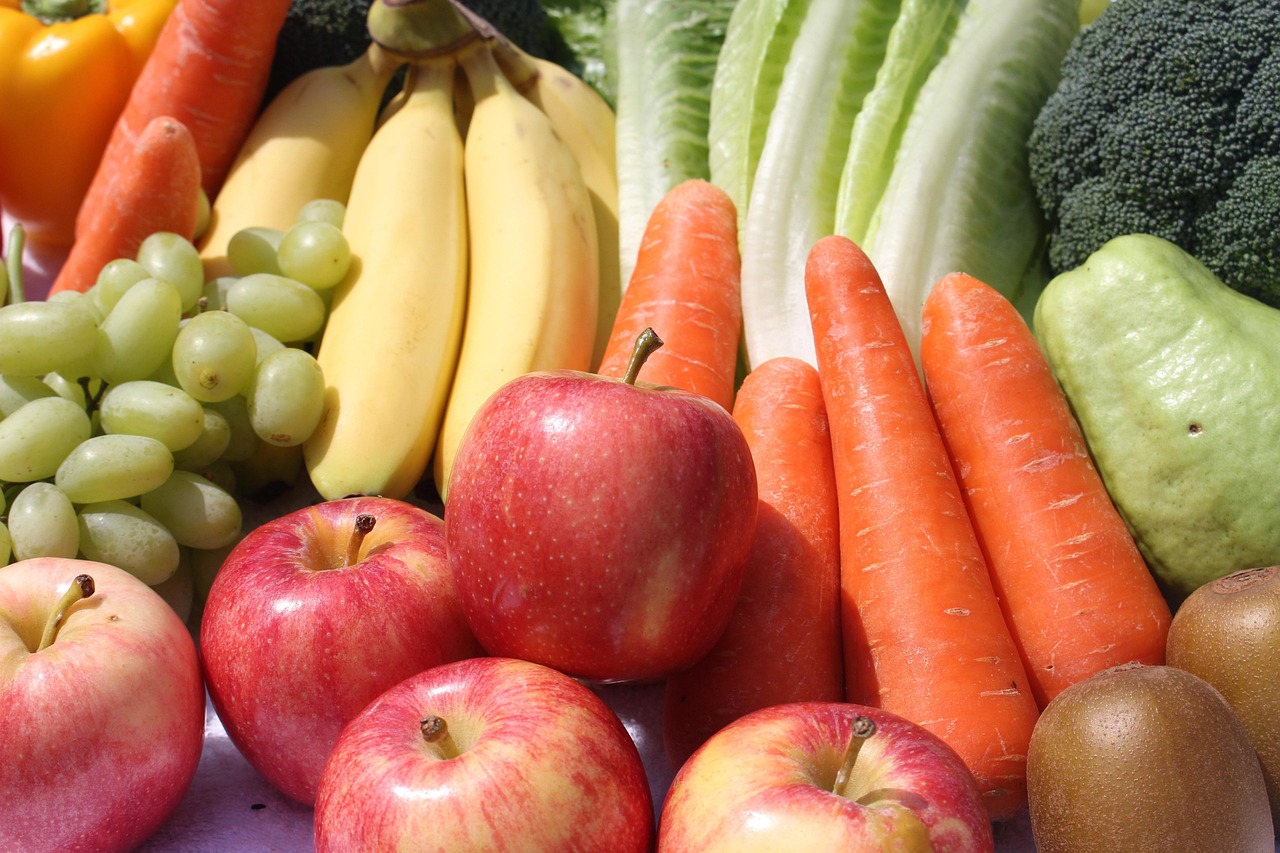Canada’s Food Guide on Eating Vegetables and Fruit—and How to Make Them a Bigger Part of Your Day

When it comes to healthy eating, one of the simplest yet most powerful habits you can develop is eat more vegetables and fruit. According to Canada’s Food Guide, vegetables and fruits are an important part of healthy eating. But what does that really mean for your day-to-day eating habits—and why is it so important? Let’s break down Canada’s Food Guide recommendations—and make them easier to follow.
Why Vegetables and Fruits?
Canada’s Food Guide emphasizes vegetables and fruits as they are good for you. They are rich in important nutrients such as vitamins, minerals and fibre making them an important part of a healthy eating pattern. Eating a variety of vegetables and fruits may help reduce the risk of chronic diseases like heart disease.
What Canada’s Food Guide Recommends
Canada’s Food Guide encourages Canadians to:
- Include plenty of vegetables and fruits in your meals and snacks. Try to make half your plate vegetables and fruit at every meal.
- Choose a variety of vegetables and fruit every day, including different colours, textures, and types.
- Eat dark green vegetables every day, such as okra, rapini, broccoli, bok choy, kale, arugula to help provide enough folate and calcium.
- Eat orange vegetables a few times a week, such as carrots, sweet potatoes, red and orange peppers, butternut squash and pumpkin to help provide enough vitamin A.
Choosing Healthy Vegetables and Fruits
Not all fruit and vegetable products are created equal. For the best nutrition, look for options that are:
- Fresh, frozen, or canned. Frozen and canned vegetables and fruit are convenient, take little time to prepare and are just as nutritious as fresh vegetables and fruit. Just check the label and choose:
- Frozen vegetables and fruits without added sugars, seasonings, breading or rich sauces.
- Canned vegetables with little or no added sodium. Drain and rinse canned vegetables to help lower the sodium content.
- Canned fruit with little or no added sugars.
- Use the food labels to help you compare canned vegetables and fruits. The % daily value helps you see if a food has a little or a lot of a nutrient.
- Whole or cut (not juice) — fruit juice is high in sugars so choose whole or cut fruits and vegetables instead, which also contain more fibre.
Preparing Vegetables and Fruit for Maximum Enjoyment
Many people may skip vegetables and fruit simply because they don’t know how to prepare them. Try healthier cooking methods such as baking, roasting, steaming or stir-frying. Don’t be afraid to also experiment with herbs, spices, citrus juices, olive oil or flavoured vinegars to enhance the flavour.
Here are some easy prep ideas to help eat more vegetables and fruits:
- Roast root vegetables like carrots, sweet potatoes, and beets with olive oil and herbs
- Stir-fry broccoli, peppers, and snap peas with garlic and olive oil
- Blend spinach or kale into smoothies
- Add spinach or canned pumpkin to soups or sauces
- Keep chopped veggies like cucumber, broccoli, cauliflower, celery, and cherry tomatoes in the fridge for quick snacks
- Batch prep fruit salads or veggie sticks to grab throughout the week
Snack Ideas: Quick Ways to Get More Fruits and Veggies
Snacking is one of the easiest ways to sneak in more produce throughout your day. Try:
- Apple slices with peanut butter
- Hummus with carrots, bell pepper strips or cucumber sticks
- Fresh or frozen berries with yogurt
- Banana or pear with a handful of nuts
- Frozen grapes or mango chunks
- Keep a bowl of fresh fruit as an easy snack
How to Eat More Fruits and Vegetables Each Day
Small changes can make a big difference. Here are a few strategies to gradually increase your intake:
✅ Add vegetables to dishes you already make — pasta, rice bowls, stir-fries, soups, sandwiches
✅ Top your morning whole grain cereal or toast with fruit
✅ Swap juice for whole fruit to increase fibre
✅ Try fruit for dessert — a bowl of mixed berries or fruit salad with little to no added sugars
✅ Double the veggies in recipes — no one will miss the extra noodles or rice
Takeaway: Simple Steps, Big Benefits
Choosing more vegetables and fruit isn’t about perfection—it’s about progress. With every colourful bite, you’re investing in your health, and building habits that can last a lifetime. What you eat on a regular basis matters for your health. So next time you sit down to eat, let your plate reflect the colours of the garden and enjoy more fruits and vegetables. Your body—and your future—will thank you.
For further information visit Canada’s Food Guide for tips, recipes, and more tools to support your health and wellness.



